Robin Waart in conversation with Denise Helene Sumi
Robin Waart was invited to develop an exhibition based on Kunstraum Lakeside’s bookshelf, an unsystematic library of artist’s and theory books accumulated since the founding of the space. Under the title Wörthersee, Wörtersee and in his double role as artist and artist-curator, he responds to the structures Josef Dabernig established for the Kunstraum with a site-specific intervention. [1] For PASSE AVANT, Robin Waart sat down with Denise Helene Sumi to talk about the show – to think of it outside of the space, its duration and the location in Klagenfurt am Wörthersee.
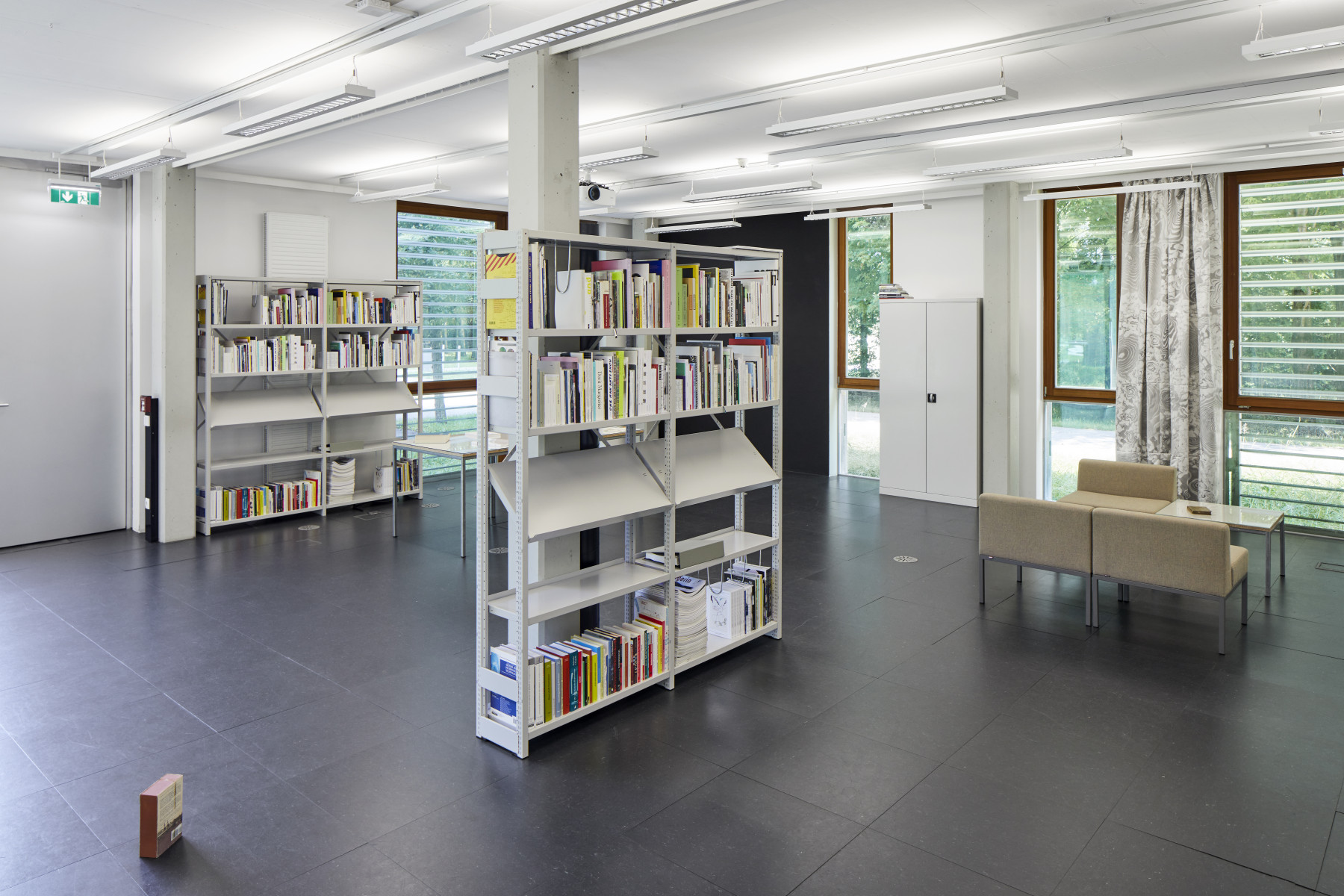
"Wörthersee, Wörtersee", Kunstraum Lakeside, exhibition view, Photo by by Johannes Puch
Being overwhelmed? By the world, even a library?
Denise Helene Sumi: We met in Klagenfurt to walk through and talk about Wörthersee, Wörtersee that you curated at Kunstraum Lakeside this summer. For me, this does not only mean entering a conversation with you as a curator, but also your ongoing dialogue with the history and library of the exhibition space and to think with the books and artworks that are on display. Initially, you were invited to take Kunstraum Lakeside’s library as a starting point; at the same time you decided to react to the space’s design, a site-specific intervention by Josef Dabernig. How did these two institutional settings influence the way you put together the show and the integration of the exhibited works itself?
Robin Waart: I have to admit the initial invitation was daunting and my way to respond started with pretending I misunderstood. In this case, that meant something like “How do I go about this?” Because the Kunstraum’s setup is so predetermined, with the office like furniture and double bookshelf that Josef Dabernig equipped the room with, I needed to reckon with that first, reading the invitation as a challenge to do something with the spatial conditions and legacy of the space.
What would an artist do? And a curator? I decided if I was to have these two roles, I should not just do both, but exaggerate, overdo it: (1) embark on the kind of crazy idea that since one of the two bookshelves in the space was still empty and a sculptor copies or doubles in marble, wood etc., the other one should be filled too, but in the same material (books); and (2) give something back to Lakeside in exchange for the invitation. To do that we had to first make a list of all the publications that had amassed on those shelves, because there was no inventory, finding a way of doing justice to the disorganised library that had become something of a summary or even a biography of almost twenty years of exhibitions, performances, events happening there.

"Wörthersee, Wörtersee", Kunstraum Lakeside: Lakeside Library, Photo by by Johannes Puch
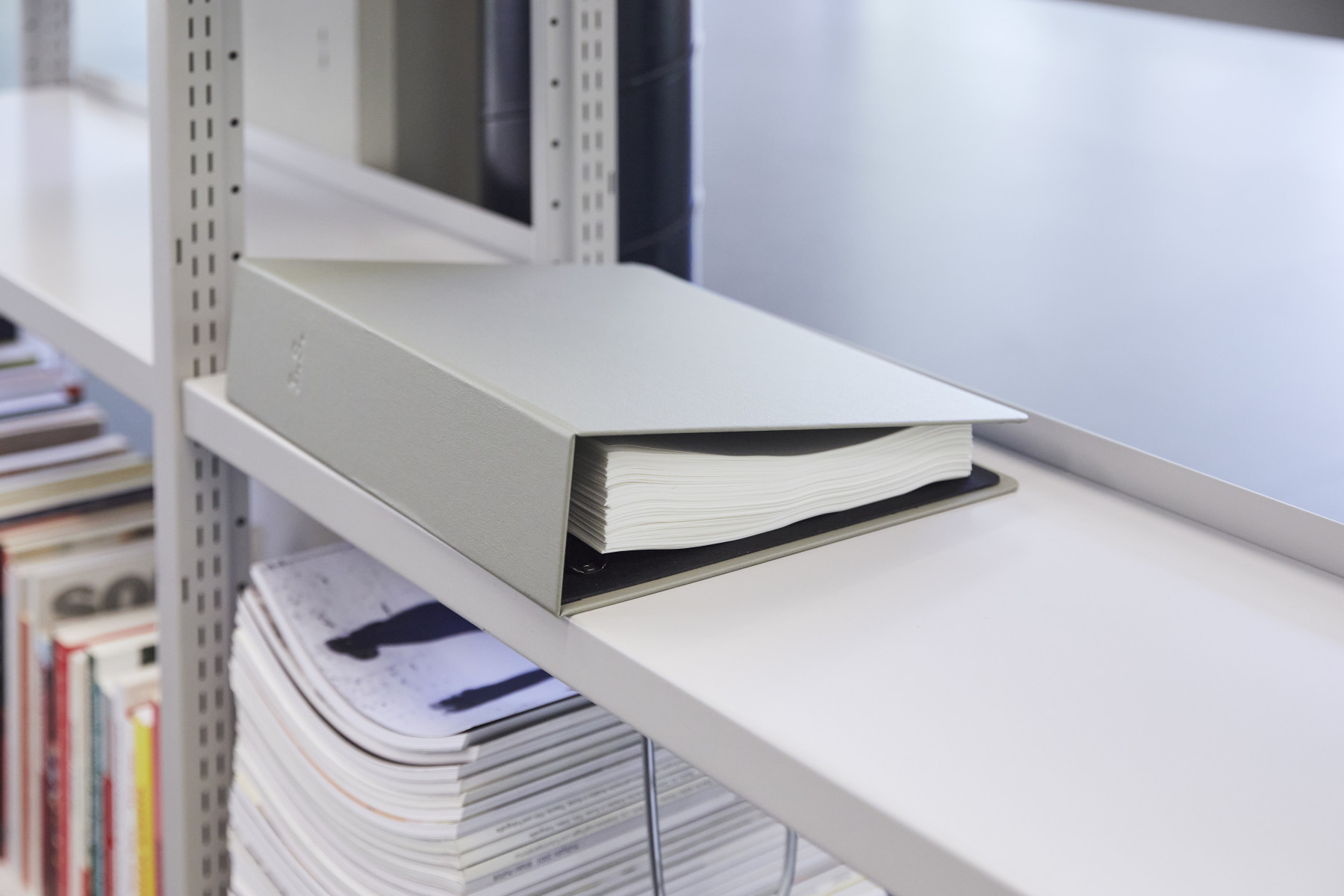
"Wörthersee, Wörtersee", Kunstraum Lakeside: Lakeside Library (binder), Photo by by Johannes Puch
Collecting the library. Assembling an assembly.
Denise: As an artist you often assemble, rearrange, and frame books, bibliographies, footnotes, pages, or film stills. By creating new constellations, you allow enact a poetic conversation with the objects, images, and words on display. How did you apply the methods of ‘assemblage’ and ‘modification’ to this curatorial project? How do these methods allow you to enable meaningful meeting points between works and works or works and visitors?
Robin: Let’s say assemblage and modification were not the primary methods on my mind – but the term ‘assembly’ is extremely useful. What this exhibition and library have in common is their putting things and people together: gathering 420 books and 4 artists would have been disproportionate, a total of 18/19 artists does this balancing act better. Budgetary and practical constraints, as when books were printed in too small of an edition, self-published, expensive, or out of stock, quickly summoned me to contact the artists, publishers, exhibition spaces that made, issued, presented them and request copies of their books in the Lakeside Library, tracing the space’s history. This library is not an anonymous thing – there are people behind, around, in it.
Denise: Yes, I can clearly see in your work as an artist, but also as a curator, or editor, that there is always this connection between a subtle and conceptual approach determined by a certain set of rules that may also serve to limit yourself. And a more affective language that speaks to the personal, auto-poetical, to friendship, and this allows for openness and contingency.
Robin: When you asked me about modification a minute ago I didn’t know how it might fit, but now it does. If you define making a work or a show as a rule based process, like a path or stairs that lead somewhere, I tried to modify as little as possible, except when it’s about making things fit, the points where the rules I made for myself, like finding or making a second copy of every publication in the library, became constricting, caused conflict. Some of the books were (or will be) impossible to reacquire or remake. In that sense, the thing I had to mold and modify was my mindset. The precision that the show exhibits or makes such a point of is asymptotic, an approach, in the sense that it is trying to get closer to something. This second library isn’t complete, but there is a chance one day it will be. These 19 or 20 artworks could be friends, if only they knew each other.
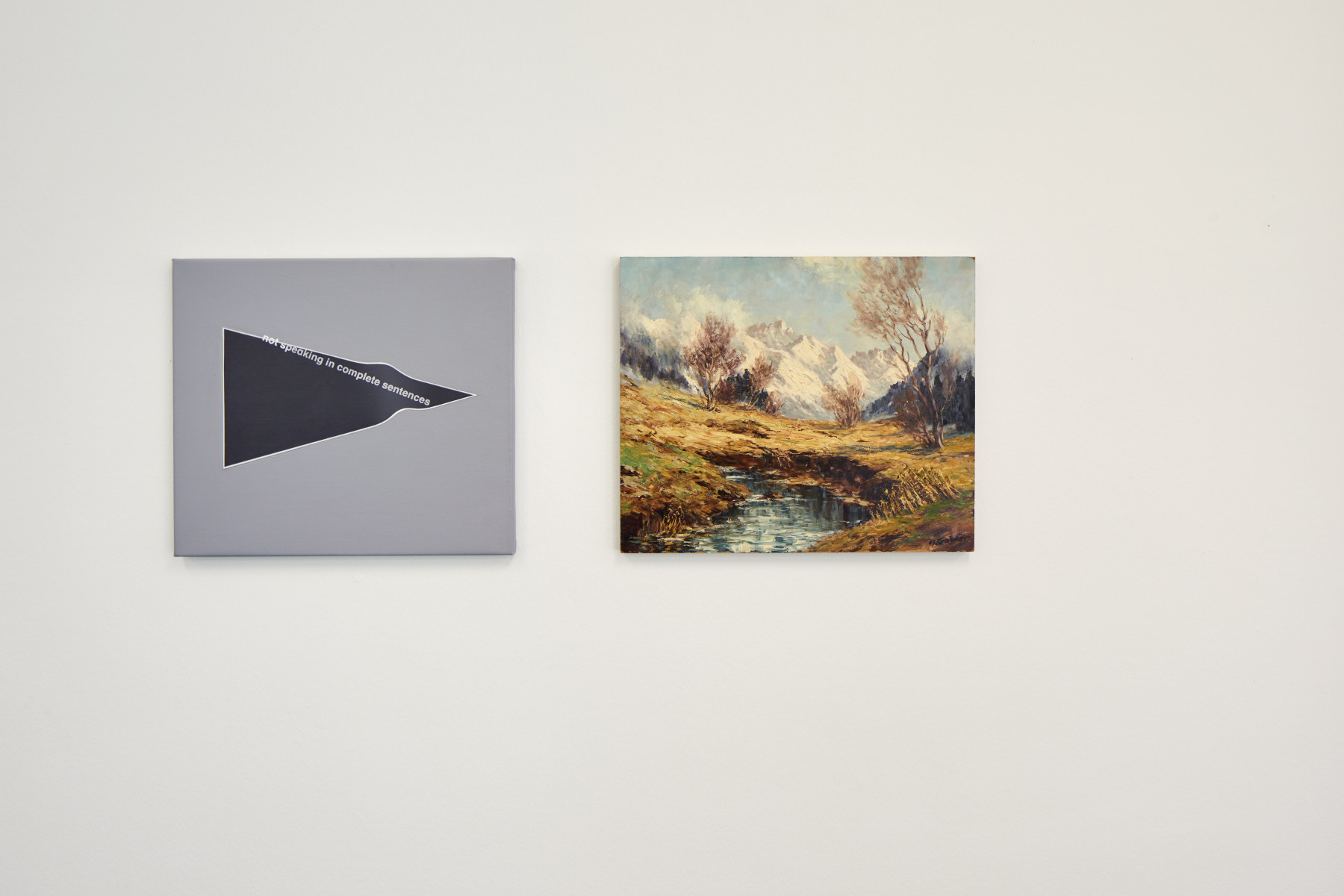
"Wörthersee, Wörtersee", Kunstraum Lakeside: Hermann Gabler, Photo by by Johannes Puch
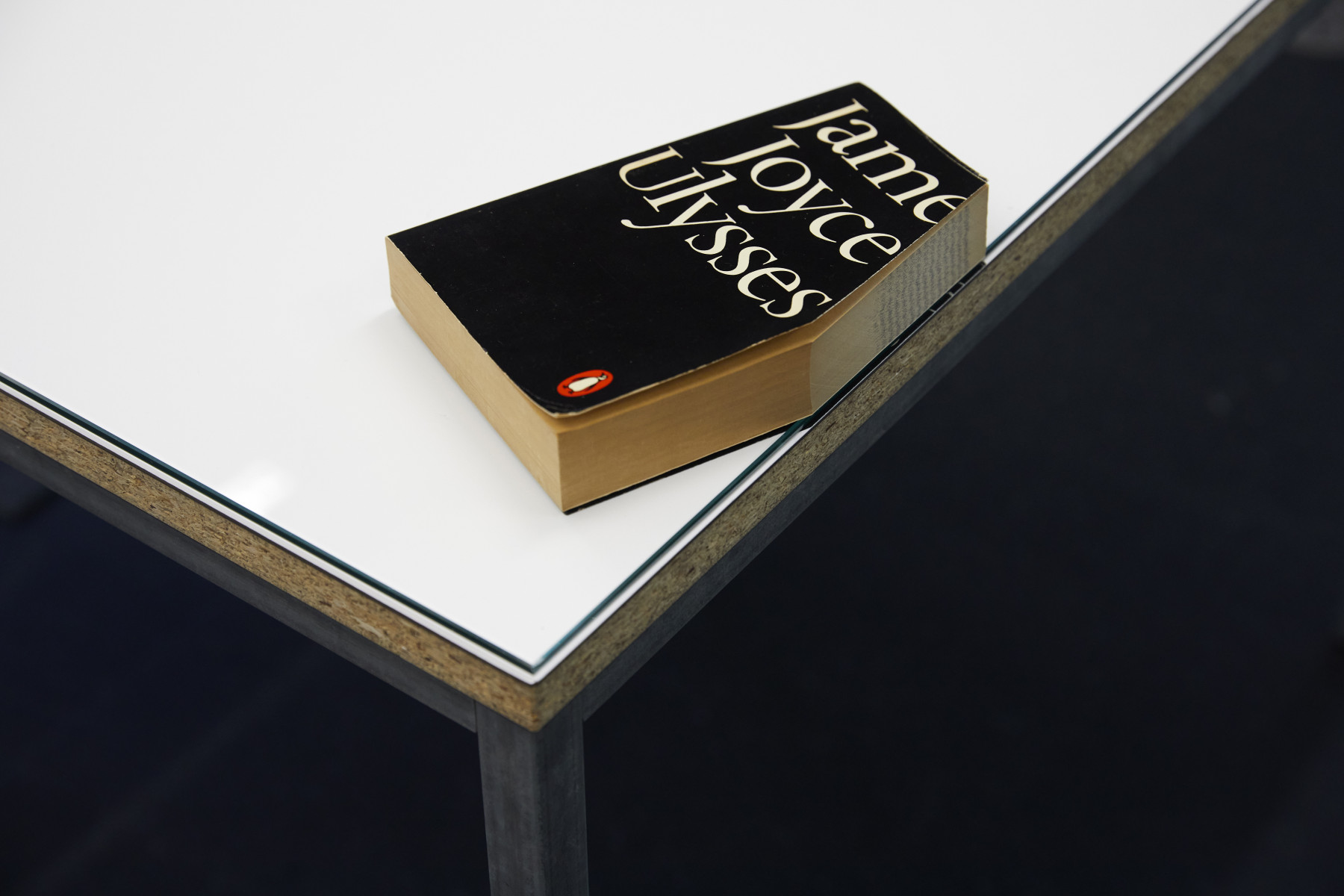
"Wörthersee, Wörtersee", Kunstraum Lakeside: Dora García, Photo by by Johannes Puch
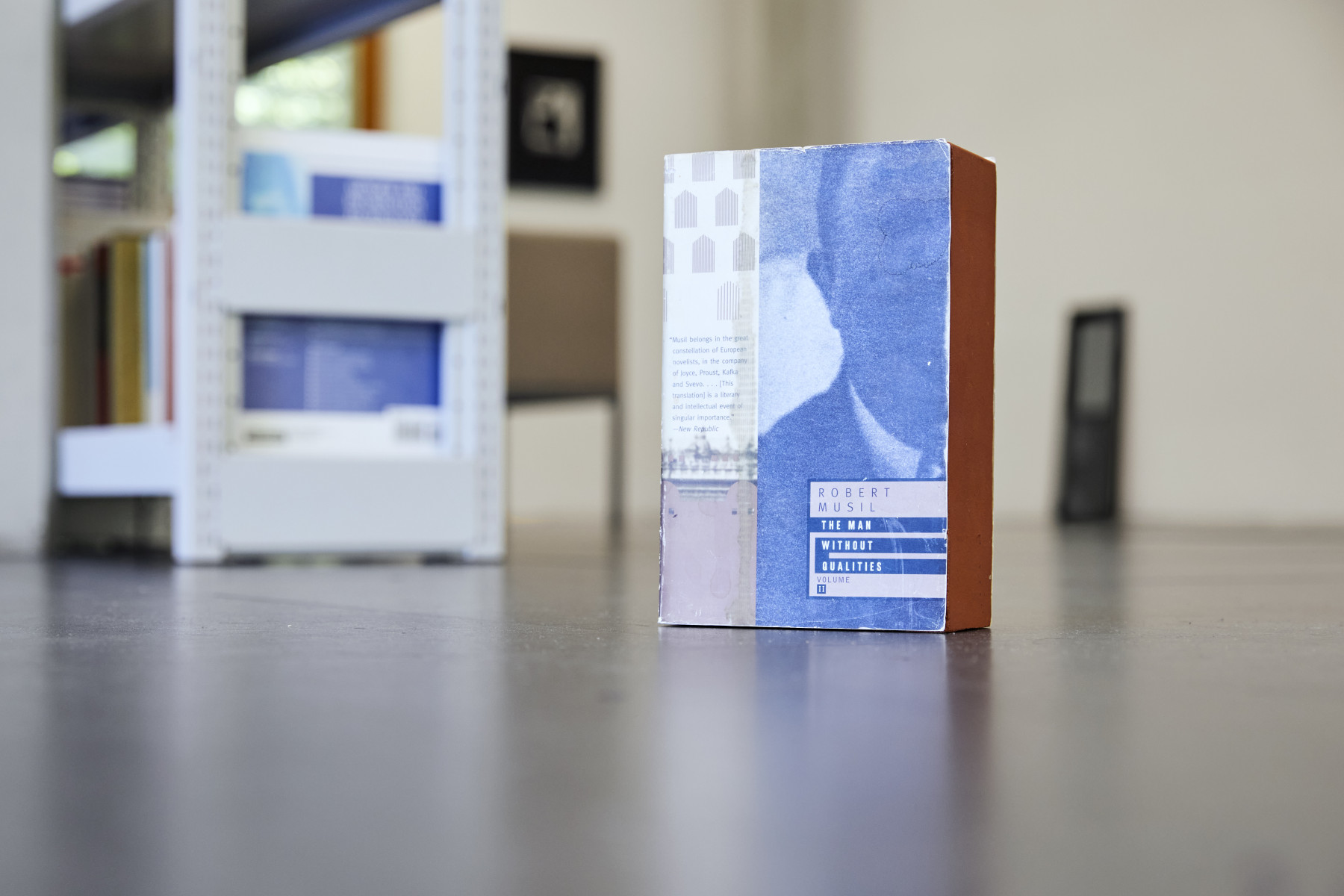
"Wörthersee, Wörtersee", Kunstraum Lakeside: Claire Fontaine, Photo by by Johannes Puch
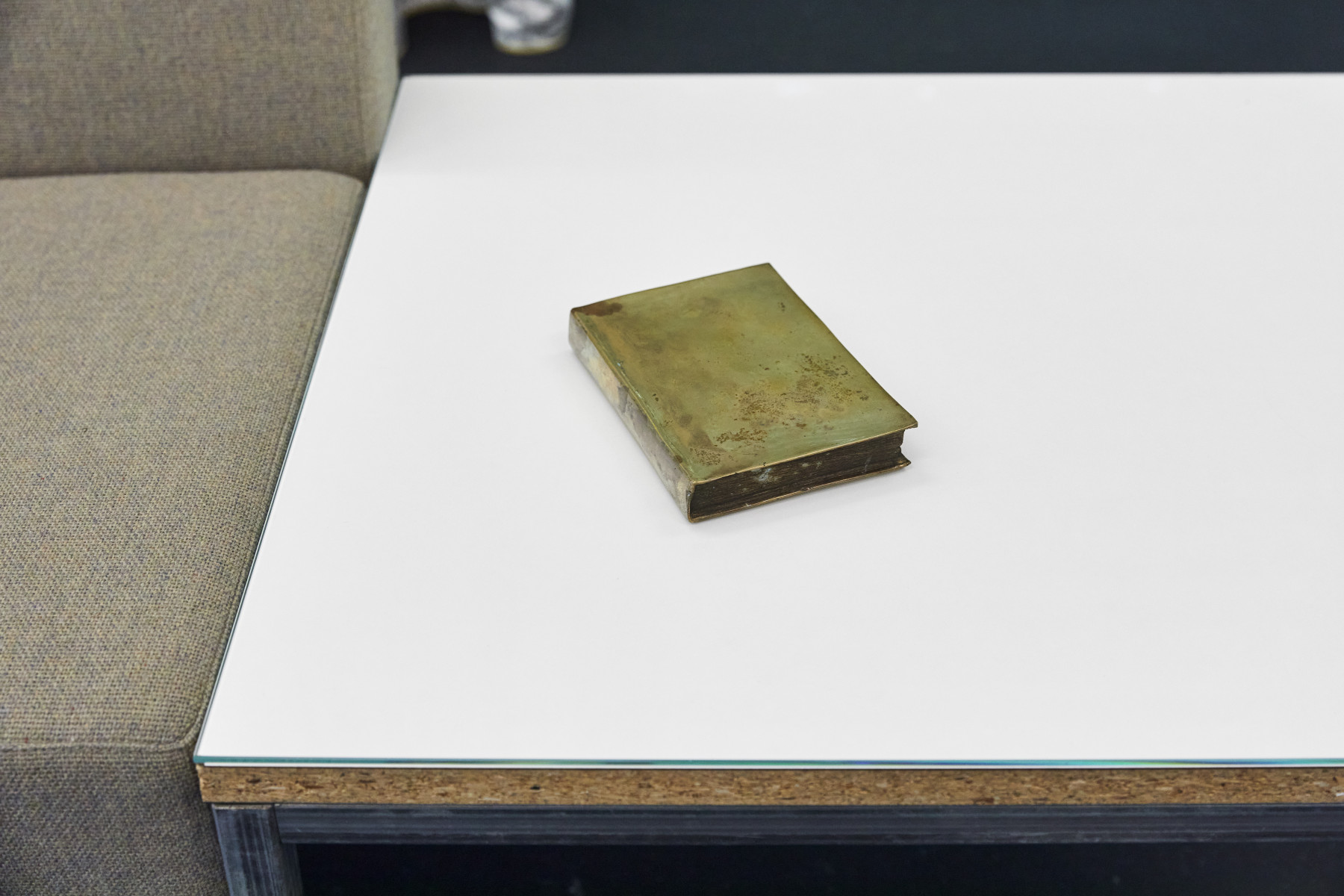
"Wörthersee, Wörtersee", Kunstraum Lakeside: Ana Jotta, Photo by by Johannes Puch
Eins und eins
Denise: At this point it would love to also talk about individual works. I was struck by the piece by Patrícia Almeida. Her video work, displayed on a monitor on top of one of the grey filing cabinets that Dabernig furnished the room with, zooms in on a shimmering disco ball, seemingly absorbing an energy it reflects back into the exhibition. Like the twin curtains by Lena Sieder-Semlitsch, both works reinforce a sense for the interior as a performative space.
Robin: I think if I start talking about one of the participants I won’t stop until I have talked about all of them, and that’s not going to be possible in the 2500 words we agreed to stick to. That said, every work has something to say about doubling, confidently, with doubt or hesitation, more conceptually, very literally. In that sense they stand up for each other. All of them are ‘not just (this), but also (that, something else)’. Lena Sieder-Semlitsch’s two curtains are marbled like the endpapers of a book and have gold and red trimming that, once installed, suddenly relate to Kay Rosen’s two red texts and Ana Jotta’s bronze cast of a small book. A shelf for a monograph disguising as a (lost) volume of Proust’s Remembrance of Things Past that is not on the shelf itself, but in the photograph under it by Irena Haiduk. Mitchell Thar’s Untitled A2 (Groove) is made from the cover paper of the artist’s publication of the same title, but also reenacts a show with two Hermann Gablers that took place in Chicago in 2018.
Maria Anwander’s copies of different wall labels for Félix González-Torres’ Perfect Lovers summon the presence of a canonical art-historical double, but is also an extension and remake of a work of her own that is now in a museum collection itself. The missing puzzle piece in Hans Schabus’ Der Turmbau zu Babel holds up a mirror to the show as a whole. Patrícia Almeida’s Mirror Ball does not reflect the Kunstraum, but is sitting up there looking down at the exhibition as a Monadentheorie in itself.
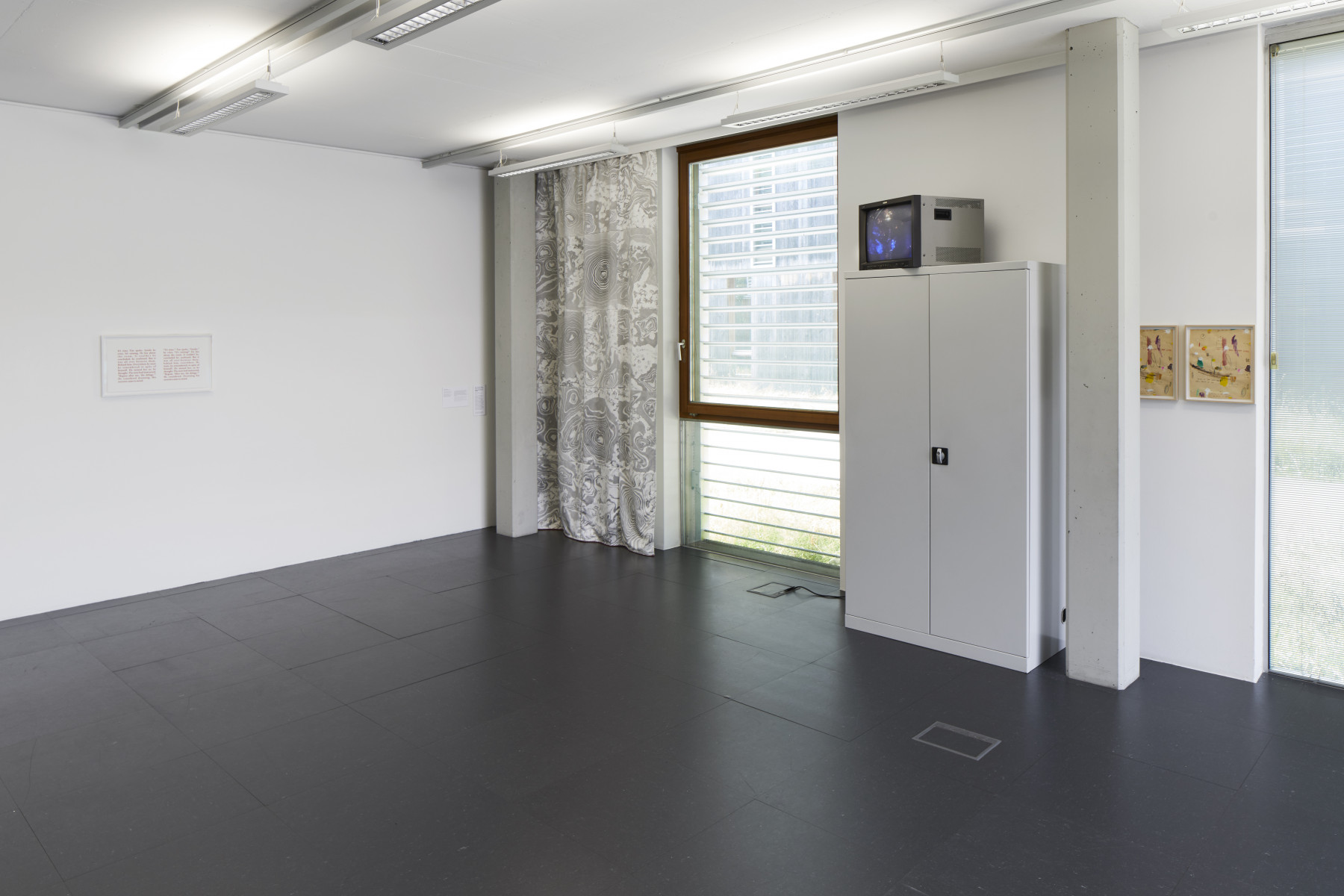
"Wörthersee, Wörtersee", Kunstraum Lakeside: Kay Rosen, Lena Sieder-Semlitsch, Patrícia Almeida, Marijn van Kreij, Photo by by Johannes Puch
Denise: In your curatorial statement you write: “One and one is eleven, but deliberately and intentionally so.” The works gathered here share a suspicion toward a singular, wholesome understanding of identity. Rather, they negotiate a multiplicity of perspectives from within; perspectives that actualize, are expressive, and poetic. While the works assert their difference, their interplay also allows for a deeper sense of kinship and friendship – becoming through the other.
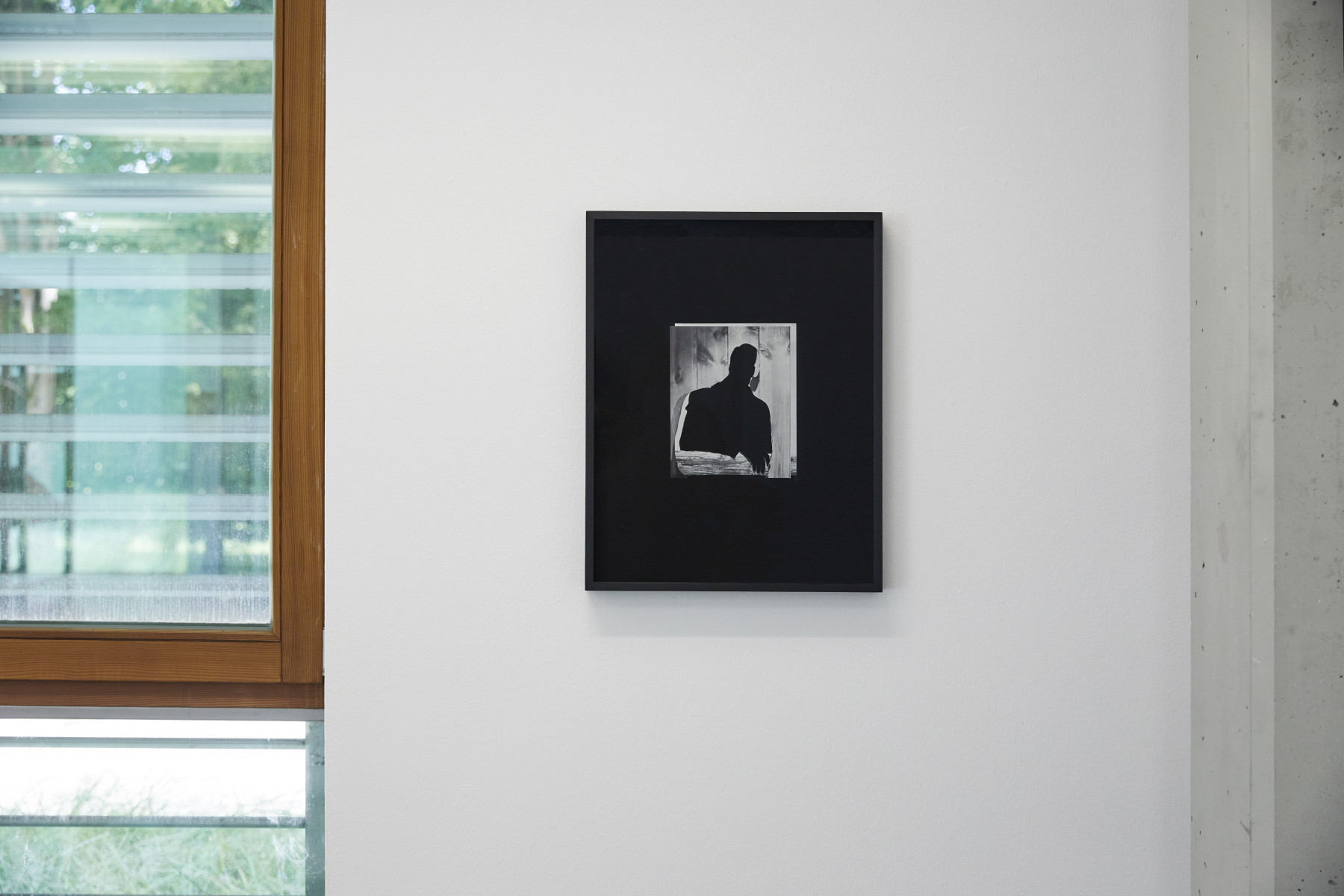
"Wörthersee, Wörtersee", Kunstraum Lakeside: John Stezaker, Photo by by Johannes Puch
Robin: The show as a whole is about creating kind of a controlled confusion or suspicious symmetry. Somewhere you go to where these scattered things temporarily gathered-together in a big room reconfigure, testing the dynamics of similarity and difference, overlaps, layers. The artists, pieces, positions in the space talking in different languages, but still talking to each other. Another way of putting it that occurred to me – but not until we were setting up – was that the works are all recognisable as pieces of a puzzle, but not the same one. And maybe as a ‘curator’ you look more at the bigger picture, and as the ‘artist’ what you do is charge the individual fragments with enough potential to become a world of their own. What was crucial for me was the question of how to give each of the artists I invited enough room to speak for themselves, their own way, be visible and heard.
It’s a new thing for me, not an institutional critique, but a reckoning, a response; from falling in love with the space the more you engage with it, to professing I would like to go deeper: the library which seems so compact at first becoming almost overwhelming, definitely more than I could read, leaving behind a system for the space to keep track of new publications, acquisitions, deaccessions. [2] That’s also why the library part of the exhibition will be shown at the Vienna Art Book Fair #2 in October and is then going to Germany for an exhibition at Ideal Art Space during the Leipziger Buchmesse next year with a publication that, itself, can be shelved inside it.
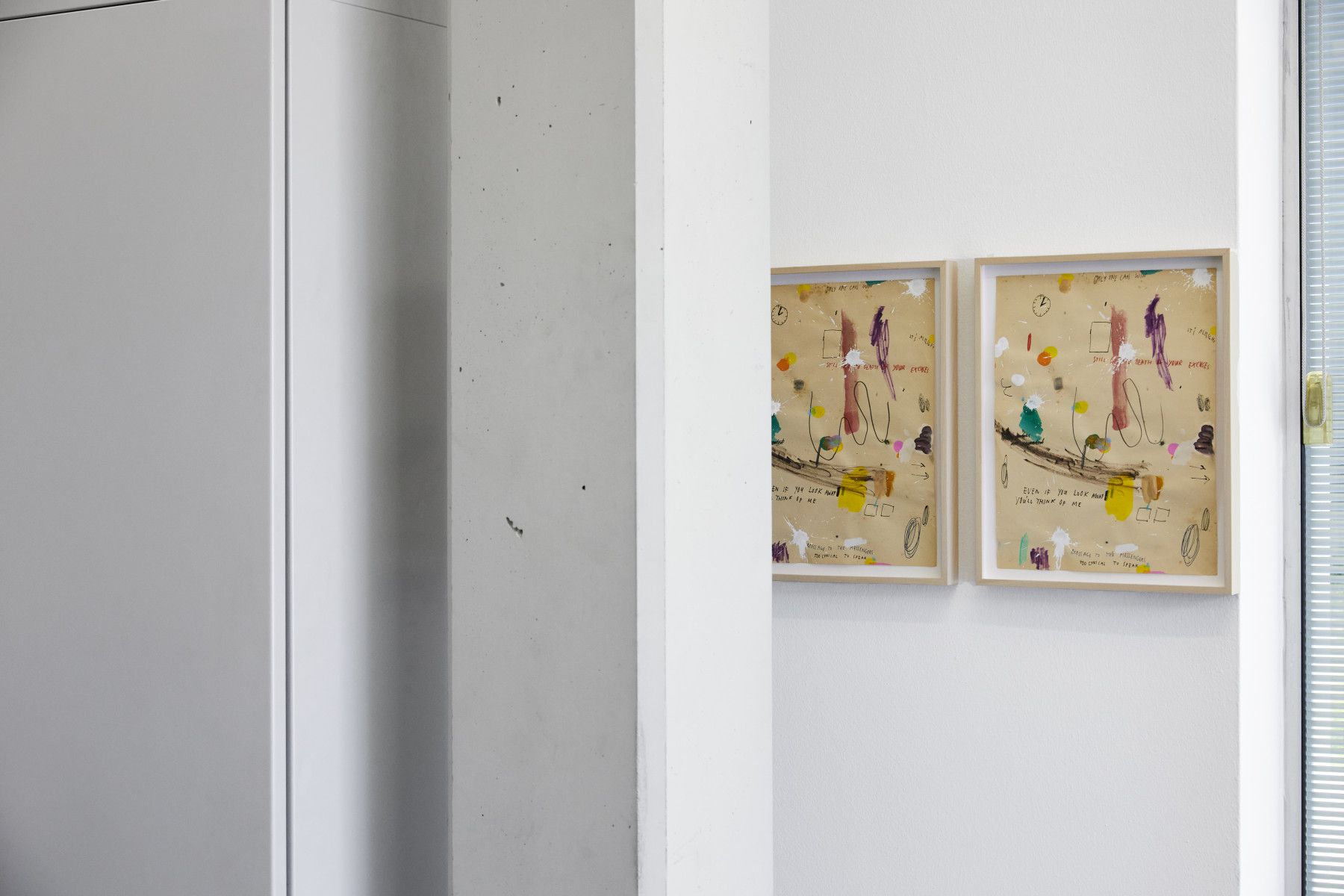
"Wörthersee, Wörtersee", Kunstraum Lakeside: Marijn van Kreij, Photo by by Johannes Puch
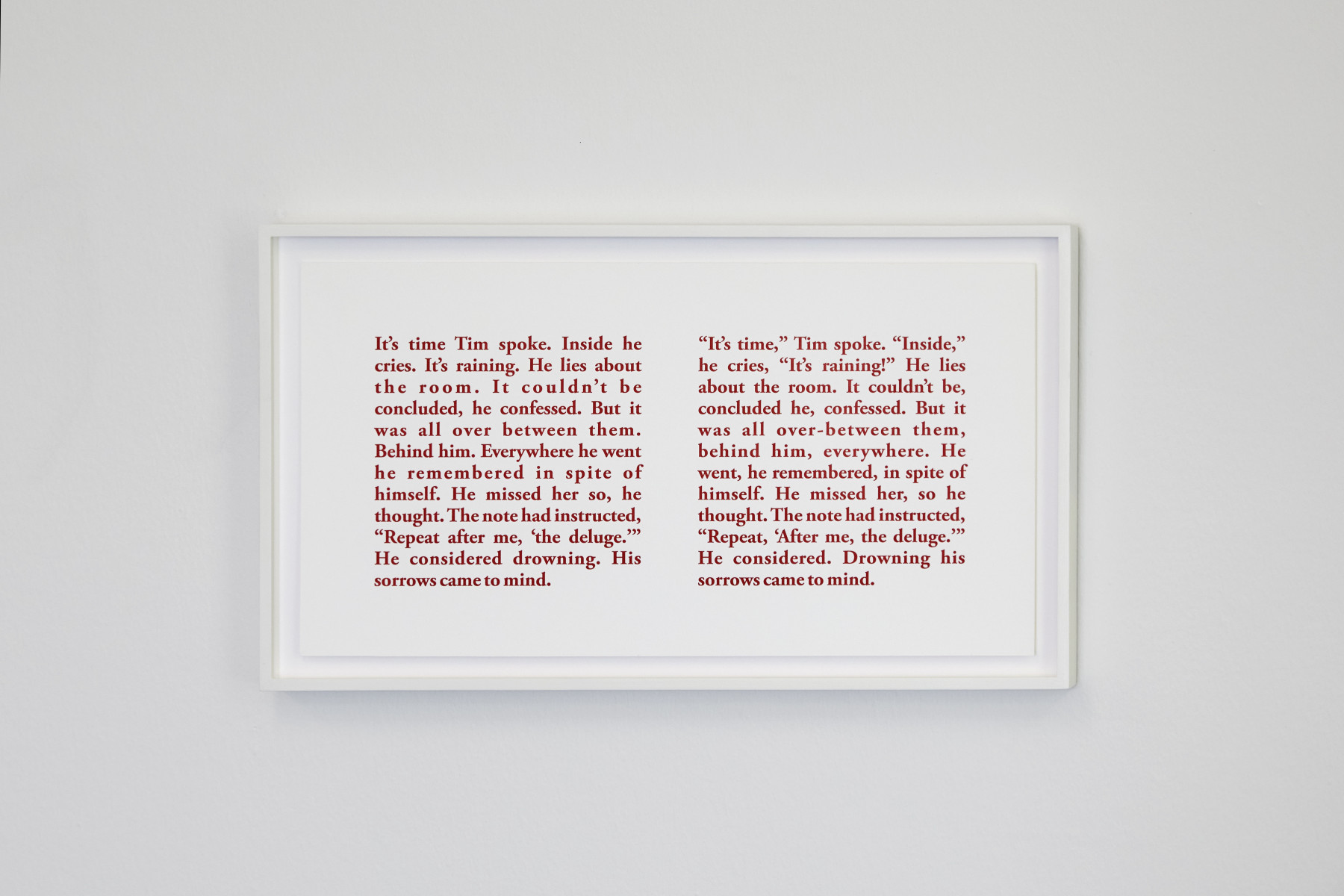
"Wörthersee, Wörtersee", Kunstraum Lakeside: Kay Rosen, Photo by by Johannes Puch
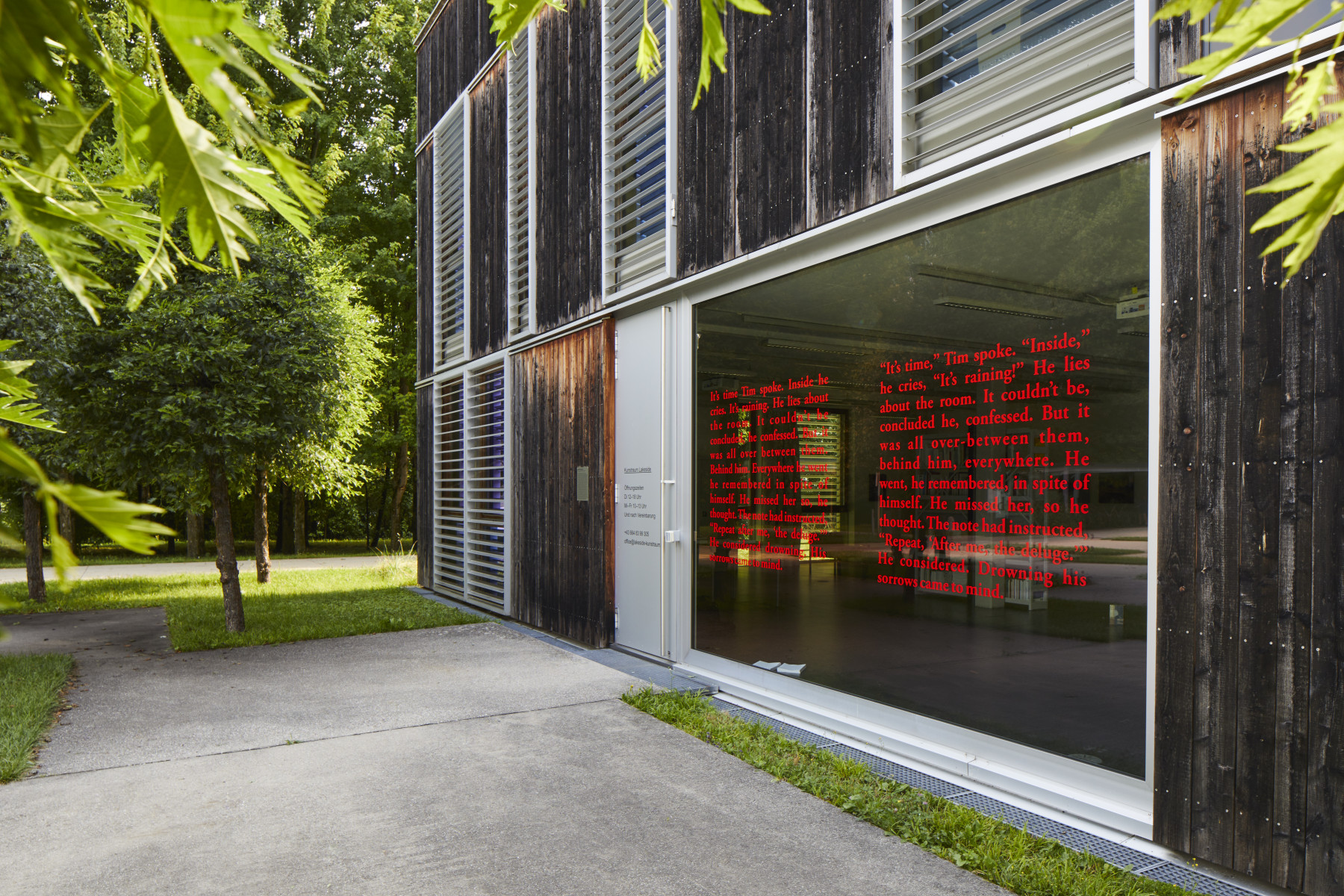
"Wörthersee, Wörtersee", Kunstraum Lakeside: Kay Rosen, Photo by by Johannes Puch
Doubt and double
Denise: The title of the exhibition is a play on words and indicates your curiosity and ongoing joyful engagement with the double, duplication, the copy, reflection, mirroring, halving, splitting, how the one relates to the other. The exhibition features works that are siblings of sorts – creating a multiplicity of perspectives – like a series of frequencies and echoes that only become palpable as minimal differences.
Robin: Siblings, as in a chosen family? I like the idea of leaving a question mark here and the words you choose that I hadn’t thought of, frequencies and echoes. It’s less easy to avoid the temptation of referencing Wittgenstein’s concept of family resemblance, even if I don’t want to bolster the show with theory. One thing I was thinking about from the start, though, was what the difference between love and friendship is. If there is an overlap, and if so: when? The two of them in dialogue, misunderstanding each other. In linguistics a ‘false friend’ is a word in one language that sounds like, but means something else, in another: wörth- and word- almost do that, providing you push the pronunciation.
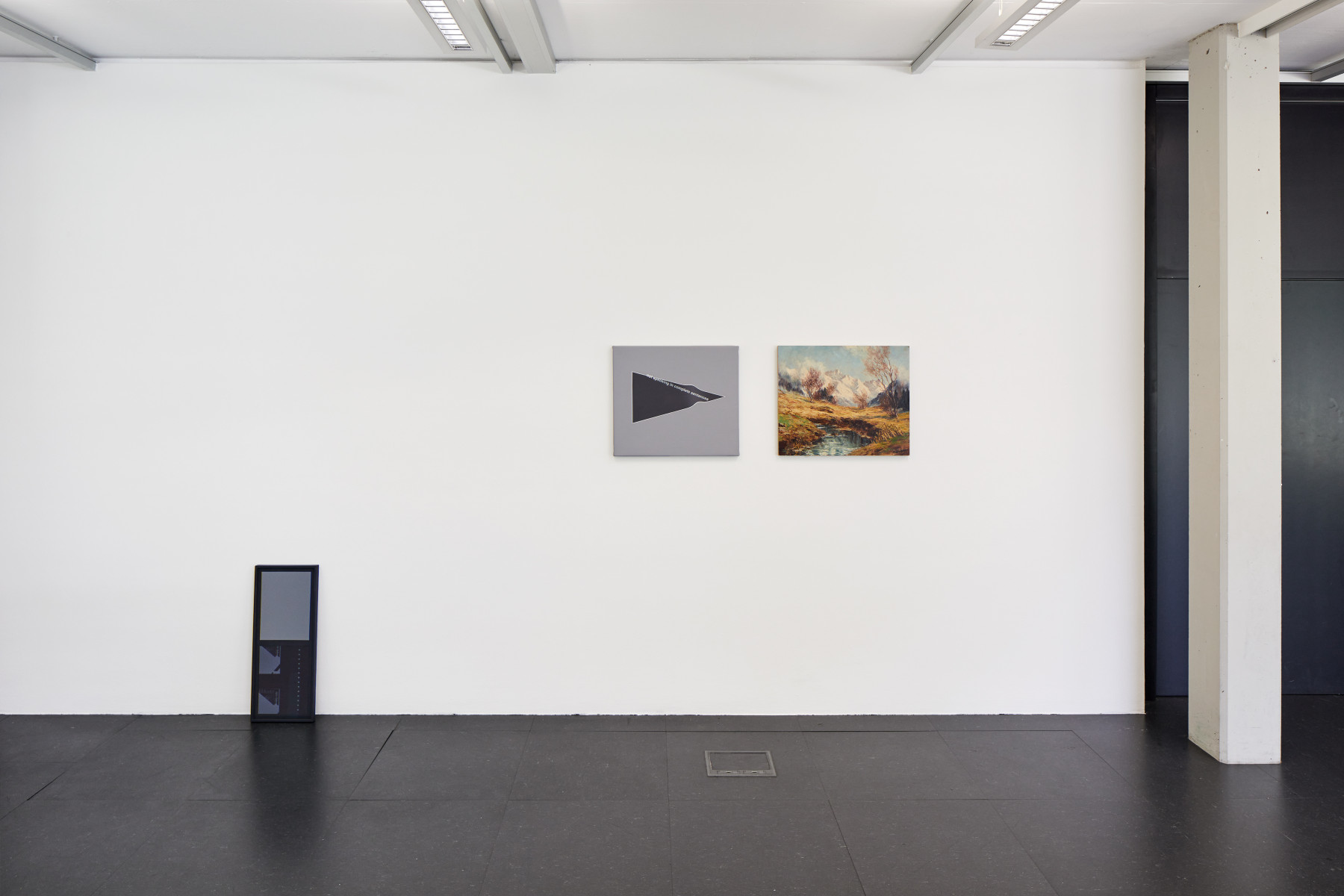
"Wörthersee, Wörtersee", Kunstraum Lakeside: Mitchell Thar, Hermann Gabler, Hermann Gabler, Photo by by Johannes Puch
Denise: Like a slippage through language? In your curatorial statement you also wrote: “When there are two—not one—this is what happens: the thing that changes is perhaps not the thing but our relationship to it.” Going through the exhibition together, I had the strong feeling that the works exhibited speak through you and our relationship to them is altered by the way you do it, binding together objects, books, institutions, artist friends, and your own position as both an artist and curator. Can we think of your curatorial method as a parenthetical expression?
Robin: Isn’t this a question of presence? I think my part in the exhibition was in trying to be there and not be there at the same time – but then in what way? As someone laying a framework, pointing to relations, possible discoveries. Then there is this library that’s always there, normally not noticed and usually, in its singularity, not included in the documentation – that’s now taking up twice as much space, both relative (maybe in a ‘family’ sense) and independent. The double is a double in two directions. It’s one shelf, but also 420 books, times two.
That’s what I would want for the show, in sum, when you break it down to its parts: for this doubling in Wörthersee, Wörtersee to work two ways, as a return, an exchange. Every work in the show is an image of the other, and back, ‘not just one thing, but also another’, keeping each other company.
[1] Read the full introduction to Wörthersee, Wörtersee by Franz Thalmair and Gudrun Ratzinger as well as the curatorial statement by Robin Waart online.
[2] The publication Lakeside Library is a takeaway poster printed for Wörthersee, Wörtersee and a set of loose-leaf extendable binders listing the library’s holdings (ISBN 978-9082936278).
Robin Waart lives and works in Amsterdam.
www.robinwaart.nl
Denise Helene Sumi is an editor and cultural producer based between Vienna and Stuttgart. She supports artists and authors in their critical-artistic productions. A special focus lies on collective approaches and dialogical formats.
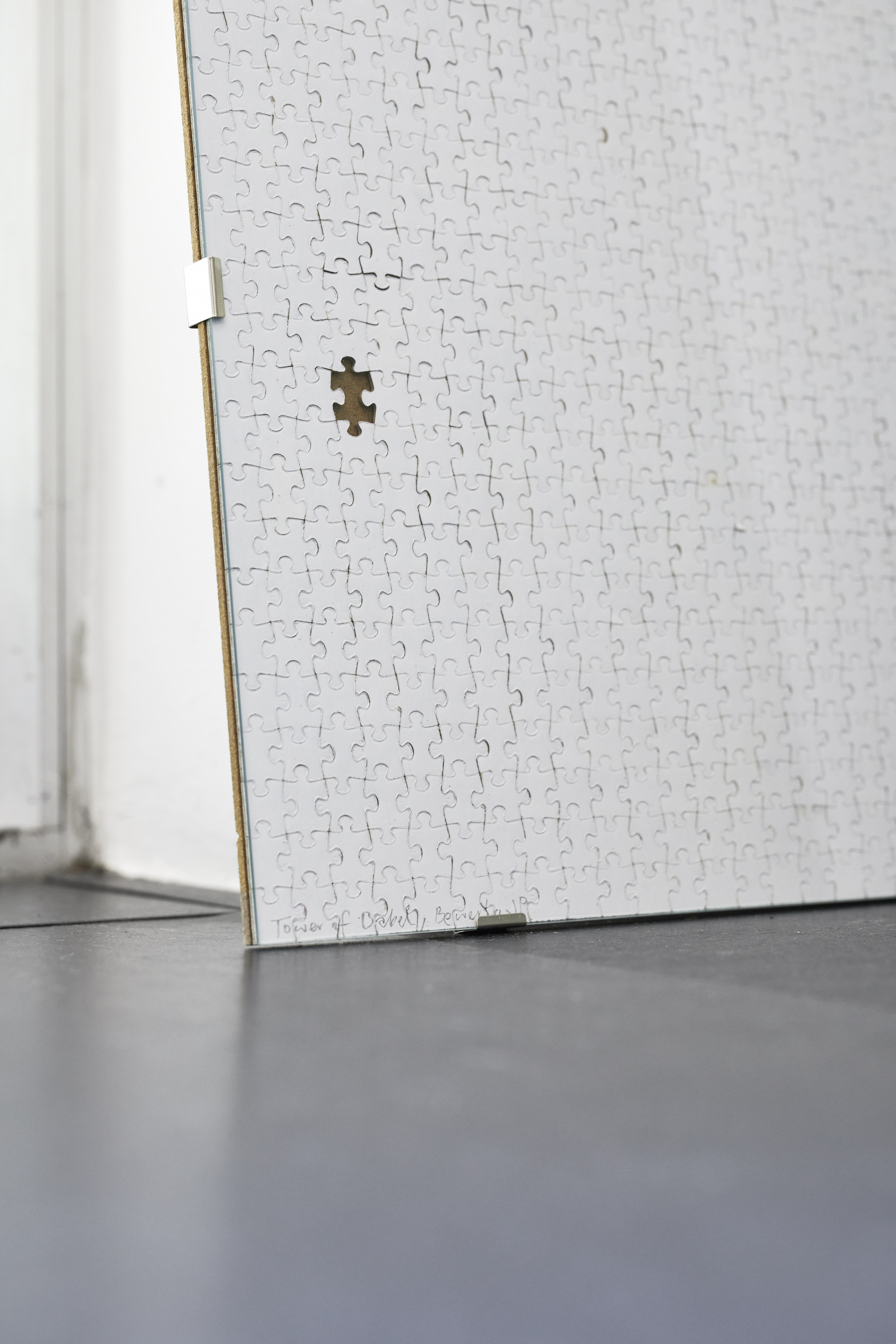
"Wörthersee, Wörtersee", Kunstraum Lakeside: Hans Schabus, Photo by by Johannes Puch
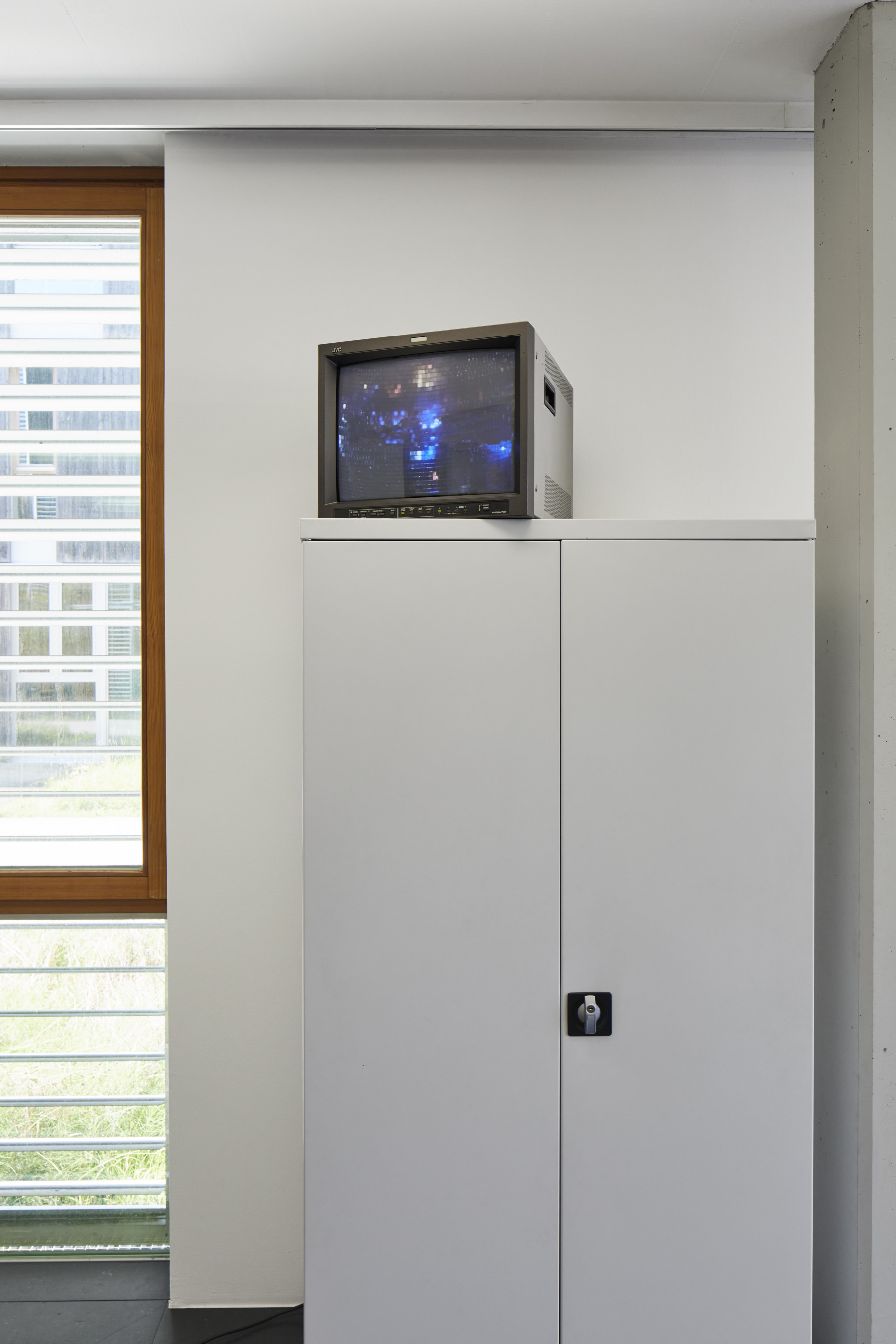
"Wörthersee, Wörtersee", Kunstraum Lakeside: Patrícia Almeida, Photo by by Johannes Puch
Wörthersee, Wörtersee
05/07 – 22/09/2023
With works by
Patrícia Almeida, Maria Anwander, Daniela Comani, Josef Dabernig, Claire Fontaine, Hermann Gabler, Hermann Gabler, Dora García, Irena Haiduk, Iman Issa, Ana Jotta, Marijn van Kreij, John Morgan, Kay Rosen, Hans Schabus, Lena Sieder-Semlitsch, John Stezaker, Mitchell Thar
Kunstraum Lakeside
Lakeside Science & Technology Park
Lakeside B02
9020 Klagenfurt
Österreich